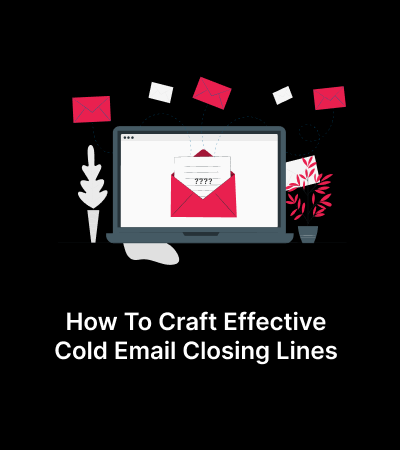![]()
Drafting successful cold emails is a skill. In our last article, we discussed how crucial opening lines are for cold emails and how they contribute to converting a prospective customer into a real client for your business. If you haven’t had a chance to look at it yet, you can do so cold email opening lines.
This time we’re going to tackle the other end of the stick, literally. We’re going to be talking about how to close an email properly.
Do you have a cold email partly drafted but aren’t sure how to finish it? Or do you feel like you’re always using the same email closings and would want some alternatives?
Just like opening lines, closing lines are equally important in a cold email to drive home the message we want to give our potential clients.
Since it is generally the final thing a reader sees after reading your email, it may be a motivating element that influences whether they respond, what sort of message they give you in response, and how soon they email you back. Consider your email closure to be the conclusion of a discussion. You have a better chance of getting a favorable reaction from your receiver if you use courteous, polite, and professional language with a clear call to action.
Here are a few recommendations to help you conclude your cold emails as effectively as you start them.
1. Include a Clear Call To Action
In a cold email, having a clear CTA is always a good idea. It instructs the recipient on what to do when they have finished reading it. The goal of sending a cold email is to compel the prospect to take the desired action. As a result, every line in the email body should lead the prospect closer to the call to action.
To avoid being overly forceful, some marketers leave out the CTA. Allowing the prospect to understand how they may profit from the email, on the other hand, will be a win-win situation for both of you.
One of the best ways to close is to include one CTA in your cold email that is straightforward to follow. For e.g.
Let me know if we can get on a call to discuss this in greater depth. I’ve shared a few of my open time-slots below. You can also pick a time-slot here.
2. Come Up With a Question
Your cold email is the beginning of a conversation, and its continuation is up to the prospect. It is like your introduction to the receiver, and you must work towards developing a lasting impact on their mind.
Ending your email with a question is a smart approach. When you pose a question, you force the reader to think about it, which influences the response they give you. The response to the question can help you understand more about your prospects, which you can then utilize to customize your follow-up emails. Receiving a response from the prospect shows that the question was of interest to them. For e.g.
Is [pain point] a challenge that your team at [Company Name] needs help addressing right now?
3. Customize the Email’s Last Lines
Personalization in your email will pay off handsomely, especially when used in the concluding paragraph.
Using the prospect’s name shortly before signing off may be a powerful way to finish an email. When prospects read their name, a biological reaction occurs in their brain that causes them to feel happy. As a consequence, it would evoke a good response. Furthermore, the prospect is more likely to recall their interaction with you. For e.g.
[First Name], there’s a lot more I’d like to share. Would you up for a virtual coffee? We can both grab a cup and talk about this in greater depth. Let me know what time works for you and I’ll block my calendar.
To Conclude
While subject lines and opening lines are talked about more often, closing lines are just as crucial when it comes to producing an effective cold email. By ensuring that your CTA is in line with your overall aims (without being too forceful) and initiating conversations, you will send emails that are more likely to generate the desired response.
